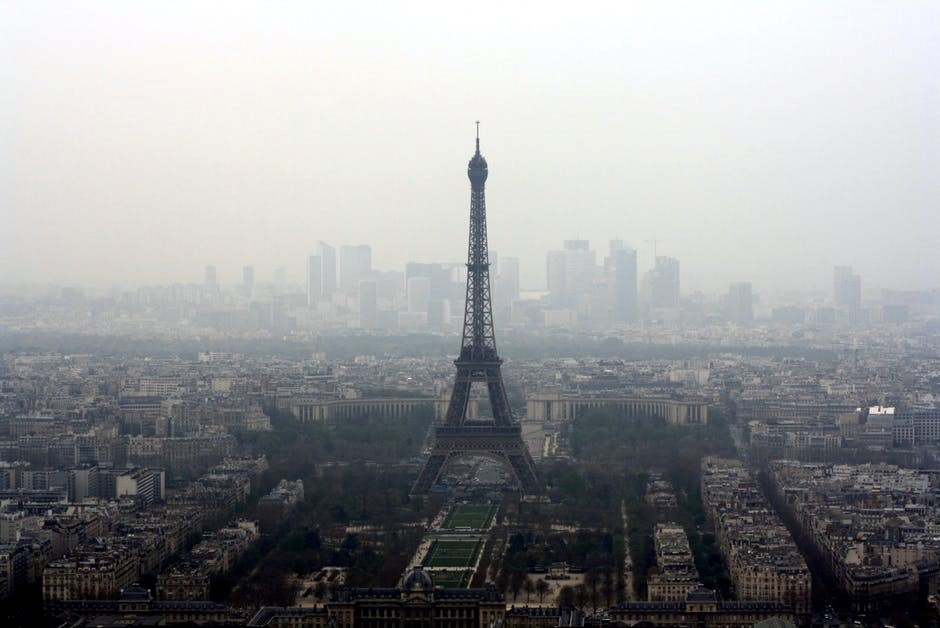For most, March 2015 and September 2016 may have faded from memory. However as someone who studies the climate, these months stand out.
March 2015 was the first month for at least 800,000 years that global average CO2 concentration remained above 400ppm. Moreover, in September 2016, the usual minimum for monthly CO2 levels, the concentration again remained above 400ppm. In fact, every month of 2016 recorded an average concentration greater than 400ppm. However, 2015 also witnessed a far more optimistic first; almost every country on earth united to tackle the impending CO2 problem.
The global media hailed the Paris agreement as a breakthrough in the fight against climate change; it seemed the world had finally woken up to the consequences of our actions. But what exactly is the Paris agreement and is it going to be the revered solution to one of the biggest threats to global health in the 21st century?
The Paris agreement sets out ambitious targets for the signatories to keep temperature rise in the 21st century lower than 2°C relative to pre-industrial levels. However, the agreement goes one step further, stating the preference to keep temperature rise below 1.5°C in order to best mitigate the multitude of risks and impacts associated with climate change.
The UK government has since stated that in order to meet the targets, ‘economy-wide improvements to efficiency, decarbonisation of electricity and scaling up of markets for zero-emission vehicles and heating’ are needed. Notably the same report also stated ‘current policies, at best, will deliver about half the required reduction in emissions’[1]. Although seemingly making a pledge to meet the proposed carbon budget, the report does little to reassure that immediate action is being taken.
It is also worth considering the views of the scientific community. Many take a somewhat pessimistic view of the Paris agreement, with suggestions that the agreement does not go far enough[2]. Furthermore, many are sceptical that the 2°C limit can be met, let alone the 1.5°C ambition[3]. Moreover, world-renowned climate scientist James Hansen has a damning opinion of the Paris agreement; “It’s just worthless words. There is no action, just promises,”[4]. Yet, perhaps the biggest blow of all is the US pledge to entirely withdraw from the agreement, further compounding the already dismal outlook. This is particularly concerning, given that the US is one of the largest producers of CO2.
However, there is some positive news to consider. A number of measures to hold countries more accountable to their commitment are set for the agenda of the COP24 meeting, which will broadly discuss climate change and the Paris agreement. Such a discussion may lead to repercussions for countries should they not meet their targets, therefore providing ample incentive to do more. In light of the threat by the US to leave the agreement, it seems EU leaders may unite against the actions of the US. A movement led by the French government is hoping to block potential trade agreements between the EU and US, should the US go ahead with leaving the Paris agreement[5]. Thus potentially harming the world’s largest economy, incentivising the US into complying. The UK government has also set out a strategy to actively remove greenhouse gases from our atmosphere, known broadly as geoengineering. It is hoped that the move will supplement the long term, steady decarbonisation of our economy.
It seems then that the Paris agreement, and indeed our climate, hang in the balance. The current outlook does appear somewhat pessimistic, yet not all hope of meeting the ambitious targets set out in the Paris agreement is lost. Should the correct policy, promises and most importantly, subsequent action be put into motion, perhaps we can avoid the worst effects of climate change. We, and our governments, need to act now, especially since CO2 emissions have once again been on the increase after a three-year plateau[6]. In the decades to come, mounting pressure from the global population who deal first-hand with the devastation of climate change coupled with technological advances will inevitably lead and drive change. However, it remains to be seen when this will happen and what the cost of delay to the Paris agreement targets, and indeed our climate, will be.
[1] https://www.theccc.org.uk/wp-content/uploads/2016/10/UK-climate-action-following-the-Paris-Agreement-Committee-on-Climate-Change-October-2016.pdf
[2] Rogelj, J. et al. Paris Agreement climate proposals need a boost to keep warming well below 2 °C. Nature 534, 631–639 (2016)
[3] Clémençon, R. The Two Sides of the Paris Climate Agreement: Dismal Failure or Historic Breakthrough? The Journal of Environment & Development, 25(1), 3–24 (2016).
[4] https://www.newscientist.com/article/dn28663-paris-climate-deal-is-agreed-but-is-it-really-good enough/?utm_source=NSNS&utm_medium=SOC&utm_campaign=twitter&cmpid=SOC%7CNSNS%7C2015-GLOBAL-twitter
[5] https://thinkprogress.org/eu-paris-us-decd4aad9145/
[6] https://www.carbonbrief.org/analysis-global-co2-emissions-set-to-rise-2-percent-in-2017-following-three-year-plateau





